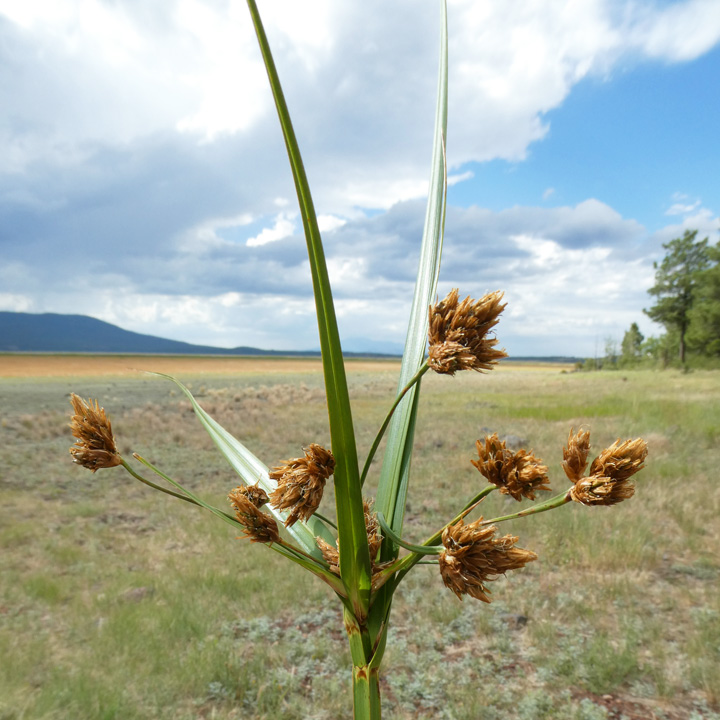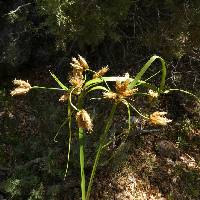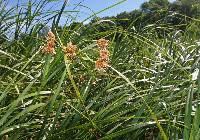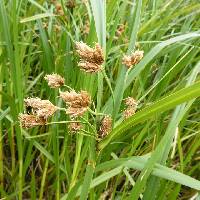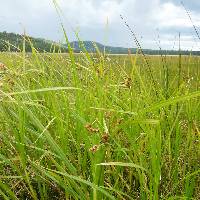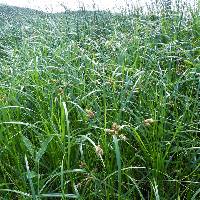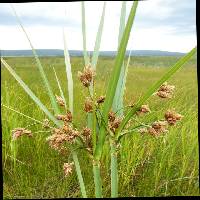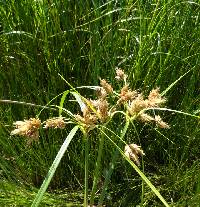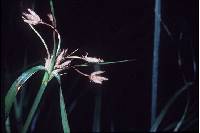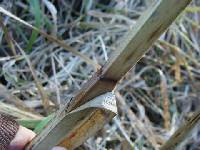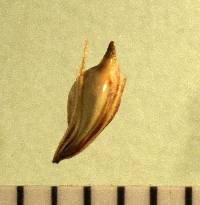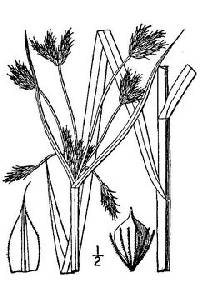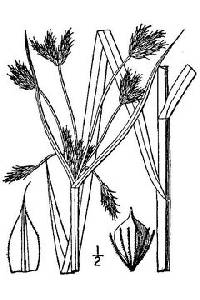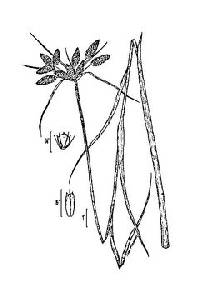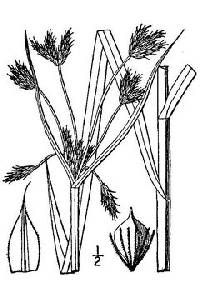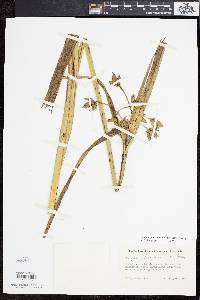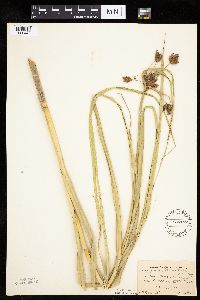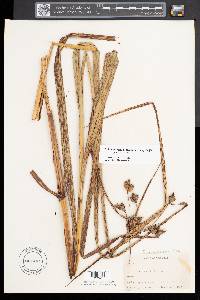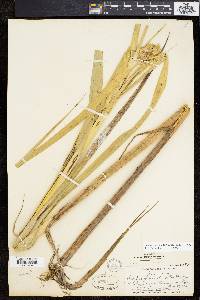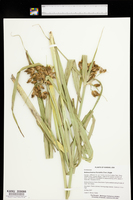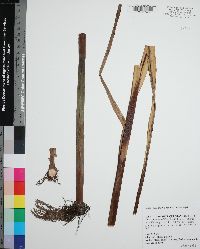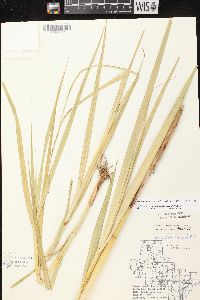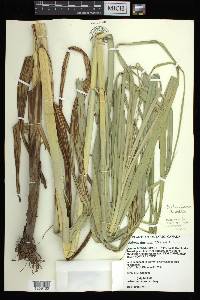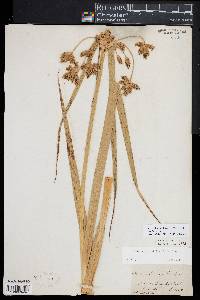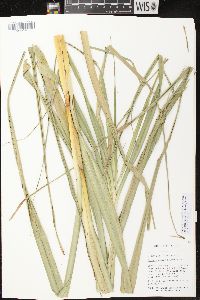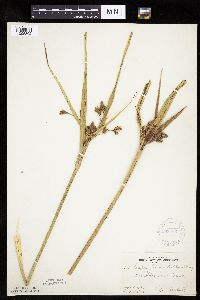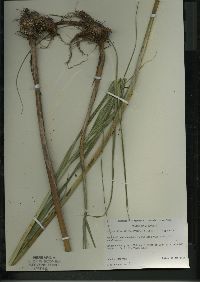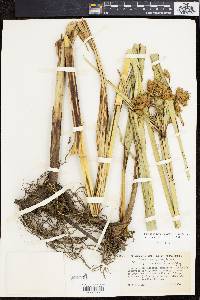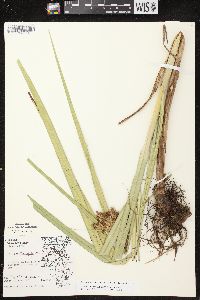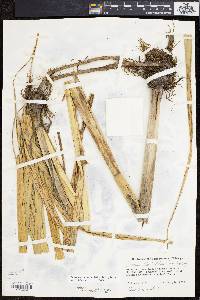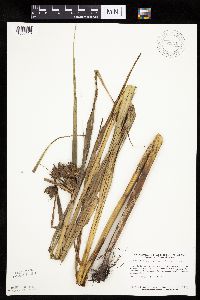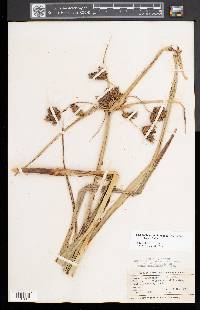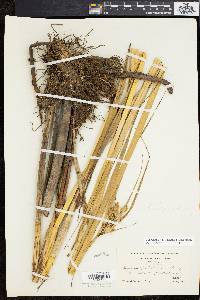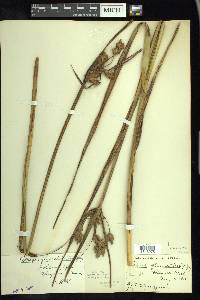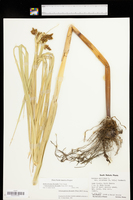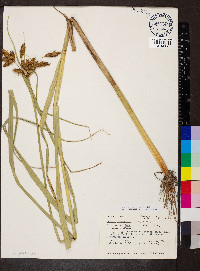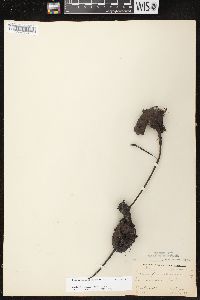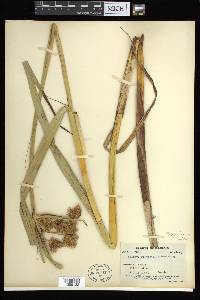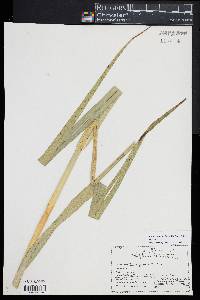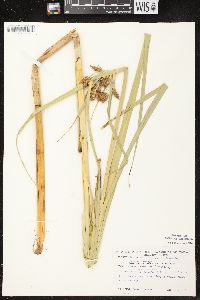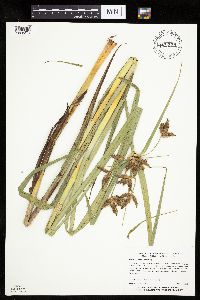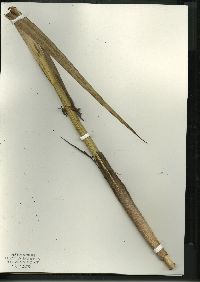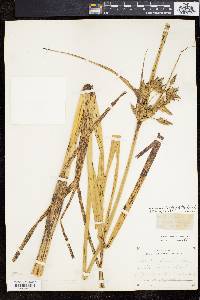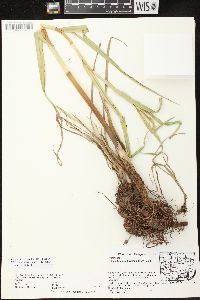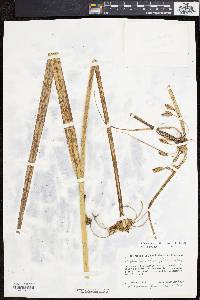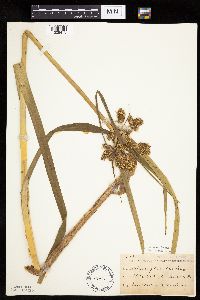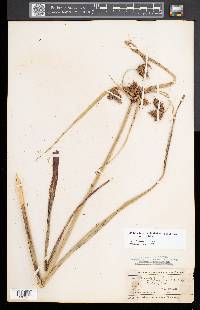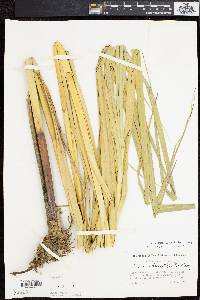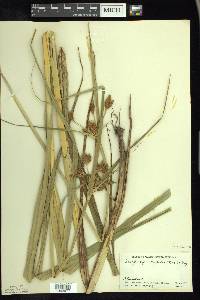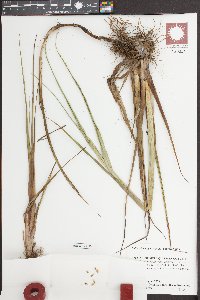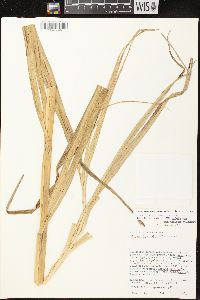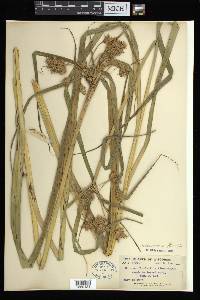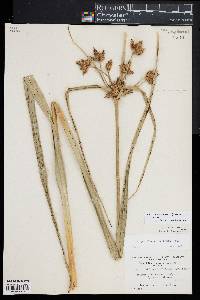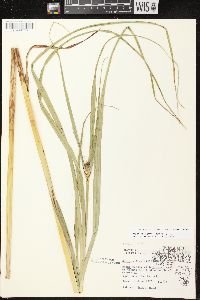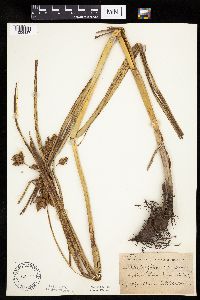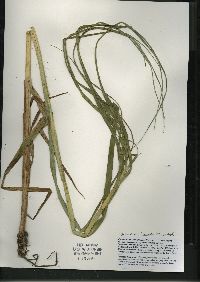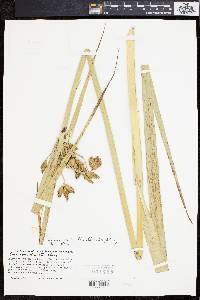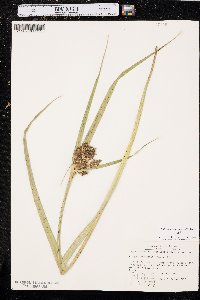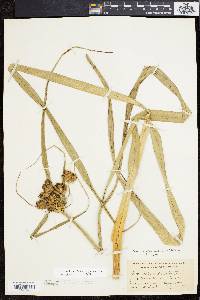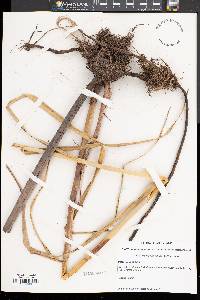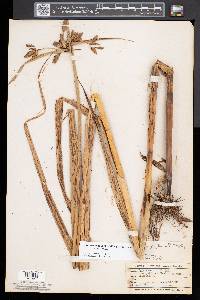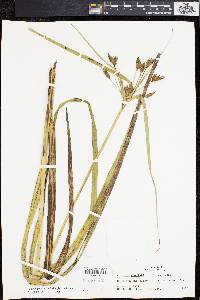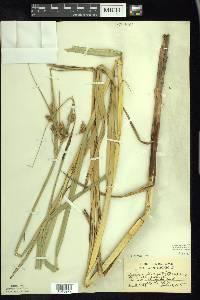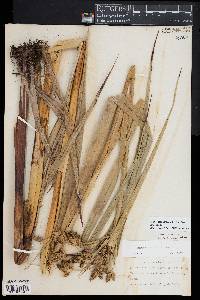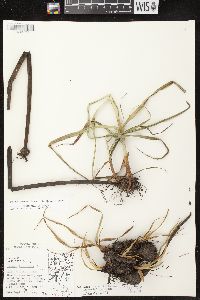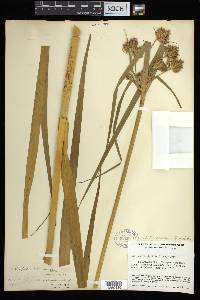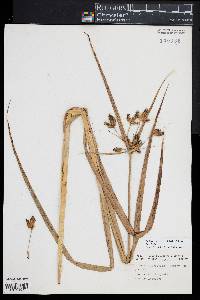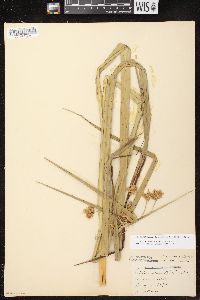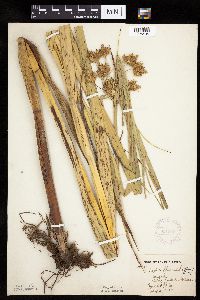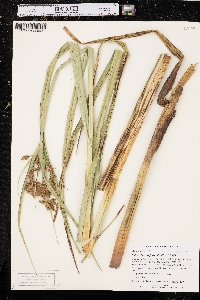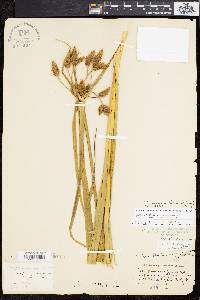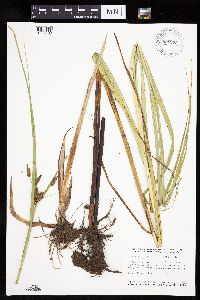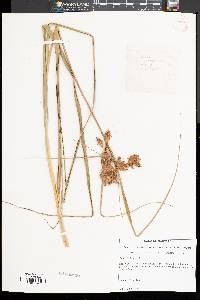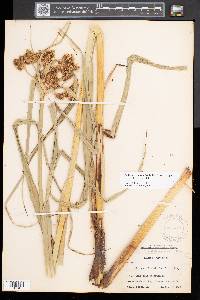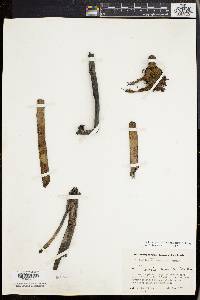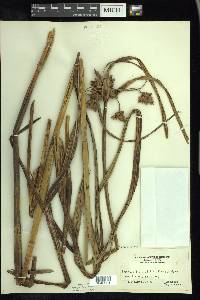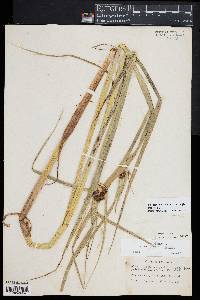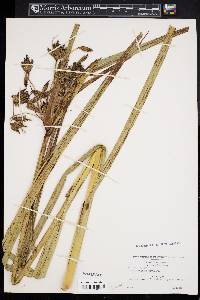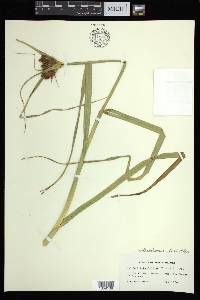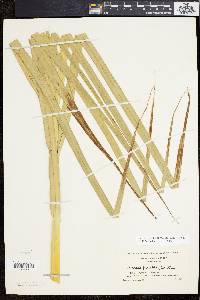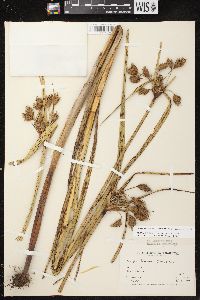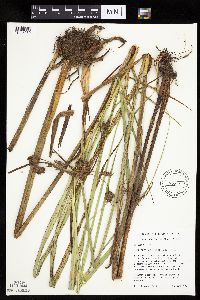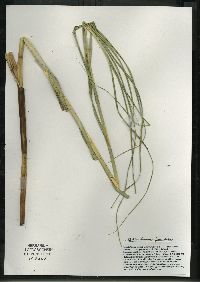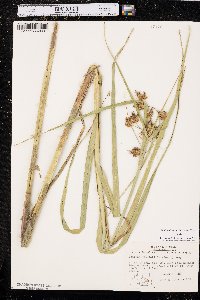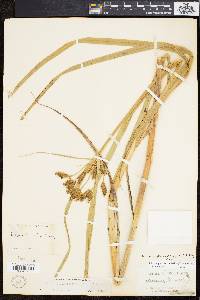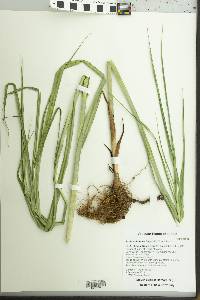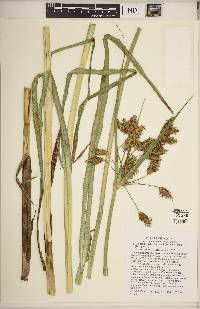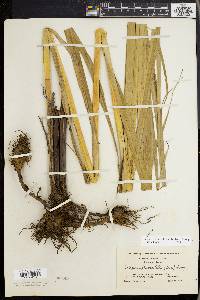Bolboschoenus fluviatilis
|
|
|
|
Family: Cyperaceae
river bulrush, more...River Wood Club-Rush, river bulrush
[Schoenoplectus fluviatilis (Torr.) M.T. Strong, moreScirpus maritimus var. fluviatilis] |
Culms 100-200 cm × 5-15 mm. Leaves: sheaths reaching to middle of culm or higher, fronts convex (to concave) and papery at mouth, veins reaching apex, very rarely diverging leaving triangular, veinless, membranous area; widest blade 7-22 mm wide. Inflorescences subumbellate, with all or most spikelets solitary or in clusters of 2-3(-8) on 4-12 rays, rays not exceeding 10 cm; involucral bracts that surpass inflorescences 3-6, widest bract 4-15 mm wide. Spikelets 10-40, ovoid to lanceoloid, 10-25 × 6-10 mm, base cuneate to rounded; scales often loosely imbricate, orange-brown to stramineous, usually obscurely lineolate-spotted, 7-10 × 3-4 mm, membranous and translucent, apex 2-fid 0.5-1 mm deep, awns fairly stout, 2-3 × 0.5 mm wide at base. Flowers: perianth bristles tightly attached to shed achene, pale brown, very stout, equaling achene; anthers yellow, 4 mm; styles 3-fid. Achenes grayish or dark brown, often in patches, obovoid to obpyriform, all nearly equilaterally markedly trigonous to slightly compressed, angles equally rounded, 3.8-5.5 × 2-2.9 mm, apex rounded, beak 0.2-0.8 mm, surface rather dull, exocarp cells usually not evident at 20X; in cross section exocarp much thinner than mesocarp and its cells very small, isodiametric; achene specific gravity greater than water. 2n = 94. Fruiting summer. Fresh shores, inland marshes, coastal estuaries; 0-2100 m; Alta., B.C., Man., N.B., Ont., Que., Sask.; Ala., Ariz., Calif., Colo., Conn., Del., Idaho, Ill., Ind., Iowa, Kans., Maine, Md., Mass., Mich., Minn., Mo., Mont., Nebr., N.H., N.J., N.Y., N.Dak., Ohio, Oreg., Pa., S.Dak., Tenn., Utah, Vt., Va., Wash., Wis.; Asia (Japan); Australia; Pacific Islands (New Zealand). Bolboschoenus fluviatilis frequently forms dense, monospecific, often entirely vegetative stands, and it is more common than recorded because vegetative colonies are often overlooked (E. W. Chester and B. E. Wofford 1992). The only record for Alabama is an 1870 collection from the East Fowl River in the Mobile Delta, where the species has not been collected since. It was intentionally introduced into New Hampshire (D. J. Padgett and G. E. Crow 1993). The report from New Mexico by M. L. Fernald (1950) cannot be confirmed because no specimen is known. Putative hybrids with Bolboschoenus maritimus occur in California. Bolboschoenus novae-angliae probably originated from B. fluviatilis × B. robustus (J. Browning et al. 1995). Introgression from B. maritimus and/or B. robustus is suggested by the larger exocarp cells (evident in surface view) in some North American plants. The Eurasian B. yagara (Ohwi) Y. C. Yang & M. Zhan differs from B. fluviatilis in its narrower leaves and smaller achenes.
Perennial herb with tuber-bearing rhizomes 1 - 2 m tall Leaves: several, three-ranked, alternate, elongate, 6 - 22 mm wide, more or less flat, linear, parallel-veined, keeled beneath, with a sheathing base that encloses the stem (margins of the sheath fused together). Sheaths to middle of culm or further, tubular, veins reaching to apex, papery at mouth. Inflorescence: an umbel-like structure composed of solitary or two- to three-clustered spikelets, subtended by spirally arranged leaf-like bracts. Bracts (that surpass inflorescences) three to six, unequal, some elongate, to 15 mm wide. Rays (branches of inflorescence) four to twelve, to 10 cm long. Flowers: minute, subtended by a floral scale, lacking sepals and petals, with six bristles. Bristles stout, pale brown, equal to achene, persistent. Stamens three, exserted. Anthers yellow, to 4 mm long. Pistil one. Style linear, three-cleft. Fruit: a one-seeded achene, flower bristles firmly attached, gray or dark brown, 3.5 - 5.5 mm long, 2 - 3 mm wide, reverse egg-shaped to reverse pear-shaped with a rounded apex bearing a tiny beak, sharply three-angled to slightly compressed. Seed with a thin, non-adherent wall. Culm: stout, 1 - 2 m long, 0.5 - 1.5 cm wide, strongly three-sided, solid, cormose at the base. Spikelets: ten to forty, 1 - 2.5 cm long, 0.5 - 1 cm wide, egg-shaped to lance-shaped with a tapering to rounded base, with more than 25 floral scales. Scales spirally arranged and loosely overlapping, orangish brown to straw-colored, obscurely streaked-spotted, 7 - 10 mm long, 3 - 4 mm wide, minutely hairy beneath, often becoming hairless, membranous, translucent, with a notched tip bearing a stiff, 2 - 4 mm long bristle (awn). Similar species: The similar Bolboschoenus maritimus differs by having 2.5 - 4 mm long, bluntly three-angled (or not three-angled) achenes and flower bristles that are weak and deciduous. Flowering: late May to early June Habitat and ecology: Locally abundant in marshes, where it often occupies large areas. Occurence in the Chicago region: native Etymology: Bolboschoenus comes from the Greek words bolbos, meaning swelling or bulb, and schoenus, meaning rush, referring to the bulbous tubers which makes it different from the genus Schoenus. Fluviatilis comes from the Latin word for river. Author: The Morton Arboretum From Flora of Indiana (1940) by Charles C. Deam Infrequent in the lake area and in the Lower Wabash Valley. It is usually found in wet places about lakes, along streams, and in ditches and ponds. I have seen about five acres of it in Knox County on the west side of Swan Pond. ...... Indiana Coefficient of Conservatism: C = 4 Wetland Indicator Status: OBL |
|
|
|

